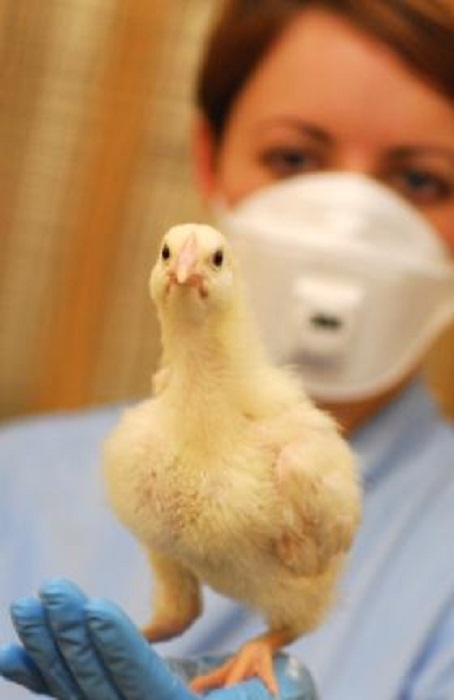A new collaboration hopes to find solutions to the ongoing bird flu crisis. Michael Barker hears from some of the participants on what the group hopes to achieve
The news that a collaboration of leading scientists is coming together to combat the avian influenza (AI) crisis in the UK was a welcome announcement in late June.
Comprising eight leading institutions, the research consortium has received £1.5 million from the Biotechnology & Biosciences Research Council (BBSRC) and Defra to develop strategies to avoid a repeat of this year’s severe outbreak. So what are its specific roles and objectives, and why is now the right time for such a united approach?
The urgency for the collaboration to come together is clear, and stems from the fact that the epidemiology of AI viruses in wild birds and at the wild-domestic bird interface is changing. Experts say that understanding the drivers behind those changes is essential to enhance the sensitivity and timeliness of risk-based surveillance programmes, and in order to design more effective disease-control interventions. “The 2020/21 and 2021/22 winter seasons have seen the most significant incursions of high pathogenicity avian influenza to date, with the incursion during winter 20/21 being the largest on record in the UK until it was dwarfed by the emergence of H5N1 during 21/22,” Dr Guillaume Fournié, senior research fellow at the Royal Veterinary College (RVC) and a member of the consortium, tells Poultry Business. “These incursions are linked to both host and viral factors, areas where critical knowledge gaps exist. This consortium aims to address these gaps by developing new to tools to understand the drivers of avian influenza emergence in the UK.”
The role of the RVC in the one-year project is to improve understanding of the virus transmission dynamics at the population scale, between wild bird populations, at the wild-domestic interface, and among domestic birds. “Specifically, we will assess the potential contribution of different wild bird species to viral dissemination and maintenance in the UK,” Fournié explains. “At farm level, we will explore how biosecurity measures are perceived and implemented, and the potential for viral spread between farms.”
There are eight players in the new consortium, bringing together microbiologists, epidemiologists, virologists, genomics specialists and mathematical modelers, with the aim of translating scientific evidence into formats that can be used by policymakers.
For the Pirbright Institute, which specialises in preventing and controlling viral diseases, it is about protecting the UK poultry industry and rural economy, which have suffered during the recent outbreaks and subsequent lockdowns of poultry flocks. “The expertise of Pirbright’s researchers will help to achieve the key aims of this consortium and as an institute we are extremely proud to be part of this,” says Professor Munir Iqbal, head of Pirbright’s Avian Influenza Virus group. “Avian influenza is an economically important virus that has devastating effects on the poultry industry, therefore improved understanding of the virus will give us more insight into how it spreads and inform our control strategies to prevent it from spreading to people and other animals.”
Four universities have also joined the fight. Dr Alastair Ward, associate professor of biodiversity and ecosystem management in the School of Biology at the University of Leeds, will investigate the role of wild birds in perpetuating the disease among poultry. Specifically, he will examine whether the virus can be consistently detected in birds routinely shot by hunters at key locations throughout England, before outbreaks start on poultry farms. If successful, this would mean that early detection of seasonal re-emergence of the disease in wild birds can be used to trigger advice to poultry farmers to enhance biosecurity practices so that they reduce the risk of an outbreak.
“Reliable detection of avian influenza in wild birds before outbreaks on poultry farms could offer opportunities to alert farmers to the need to enhance biosecurity practices, such as temporary housing of free-range birds, in order to reduce their chances of suffering an outbreak,” Ward explains. “With the cost to the industry likely exceeding £100m last season, such advice could result in massive financial savings for the industry and national economy and substantial reduction in the numbers of domestic birds slaughtered to waste in order to control the disease.
“Since hunters lawfully shoot several thousand ducks and geese in the UK each year, these could offer an excellent resource for testing for the disease. This is what we are seeking to evaluate during our study.”
The collaboration might be an effort between researchers, but that doesn’t mean farmers themselves don’t have a huge role to play too. “The most important actions [farmers can take] would be to ensure the highest biosecurity standards on premises to reduce the risk of viral incursion onto the farm,” says Fournié. “Also, a close monitoring of flock health so that if poultry become infected, the infection can be detected as early as possible and the risk of it spreading to other farms is minimised.”
Researchers and industry are coming together as one to tackle the crisis, and if successful, fears that millions of pounds will be lost to AI every year could yet prove to be unfounded.
The global fight against AI
The UK’s Royal Veterinary College is involved in multiple projects focusing on avian influenza and poultry health around the world. The largest, the UKRI GCRF One Health Poultry Hub, investigates the impact of poultry production intensification on the risk of zoonotic disease emergence. It involves social and biological scientific research on avian influenza viruses, anti-microbial resistance, and food-borne pathogens in Bangladesh, India, Sri Lanka and Vietnam.
Standing together
Eight bodies are involved in the new consortium. They are:
- Animal & Plant Health Agency
- The Pirbright Institute
- Royal Veterinary College
- The Roslin Institute
- University of Cambridge
- Imperial College London
- University of Leeds
- University of Nottingham


